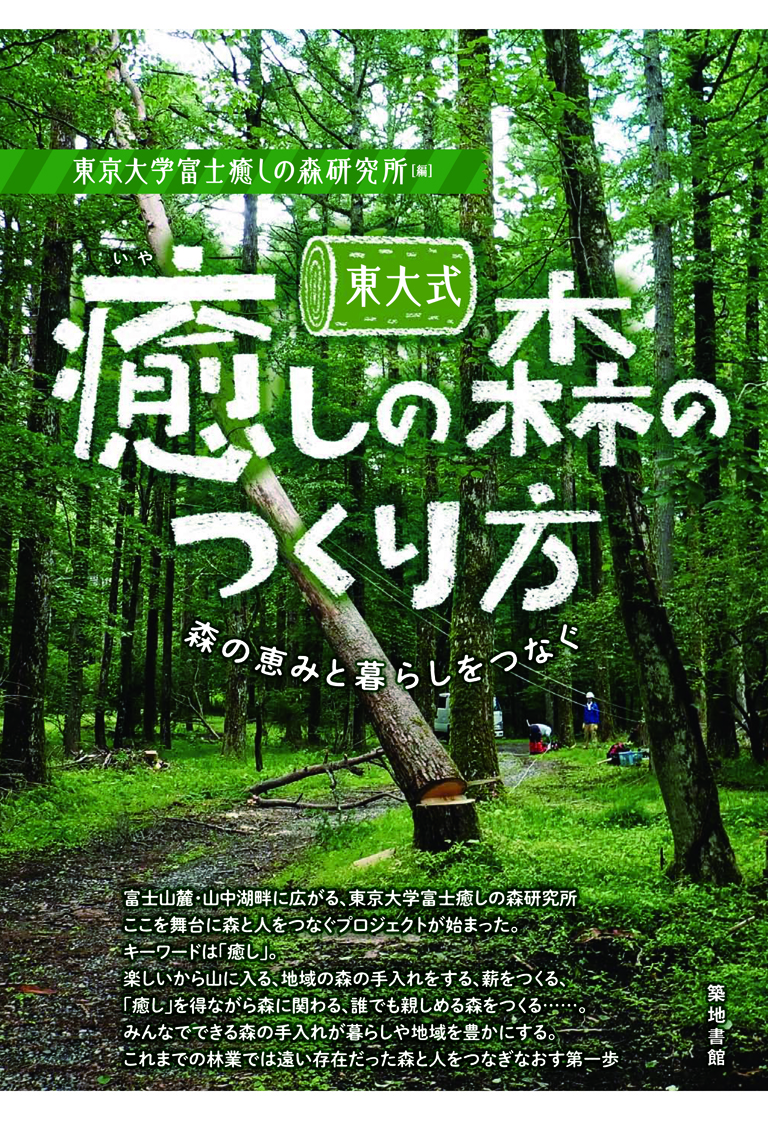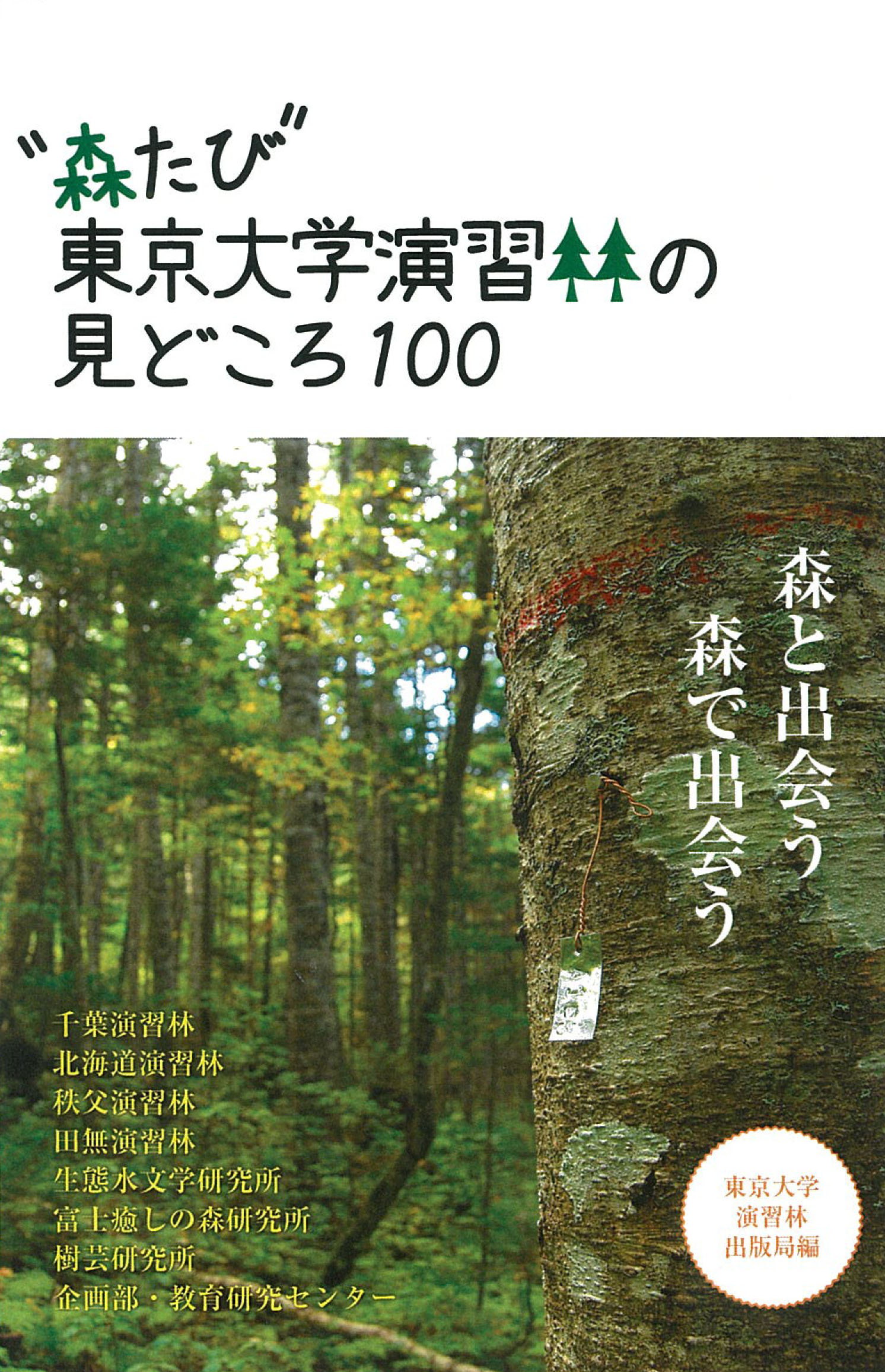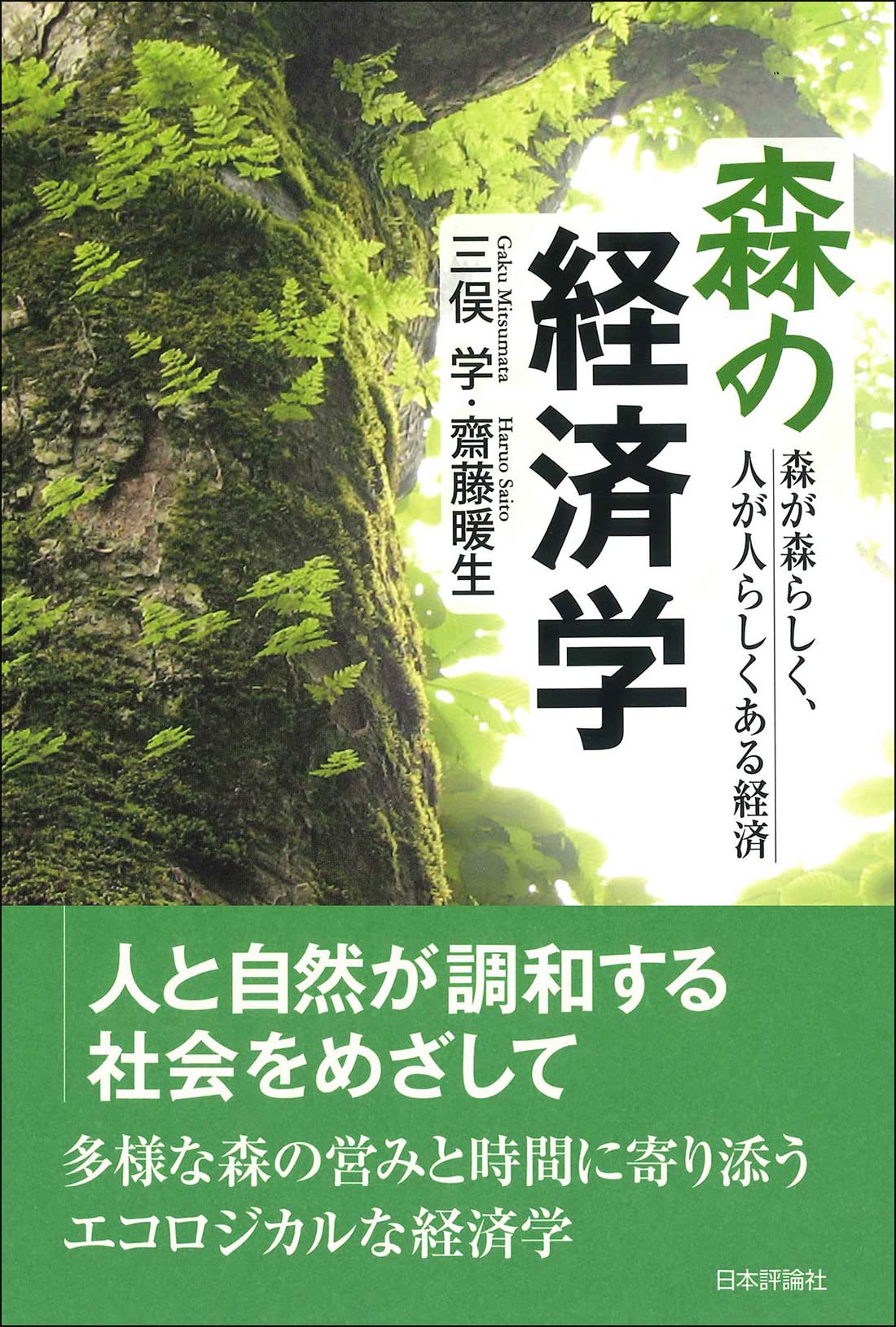
Title
Todai-shiki Iyashinomori no Tsukurikata (How to Create Amenity Woods - Linking Woodland Benefits with Our Daily Lives)
Size
240 pages, 127x188mm, softcover
Language
Japanese
Released
October, 2020
ISBN
978-4-8067-1608-2
Published by
Tsukiji Shokan
Book Info
See Book Availability at Library
Japanese Page
This book explains the foundational principle of the Fuji Iyashinomori Woodland Study Center (hereinafter Study Center), one of the University of Tokyo’s Forests, while introducing the idea of obtaining comfort and healing through engagement with forests. The Study Center conducts educational and research activities that emphasize the recreational function of forests—i.e., forest characteristics that make them suitable spaces for rest and recreation. Since the launch of the “Iyashinomori [Amenity Forest] Project” in 2011, the Study Center has been exploring social schemes to support the autonomous maintenance of forests with excellent recreational function. The gist of the book, in brief, is that efforts by the general public to engage more with and proactively seek benefits and healing from forests will lead to better forest management. The book is thus written from this perspective with the general reader in mind and provides numerous practical ideas of how we can make forest engagement a more normal part of our everyday lives.
At the same time, the book is aware of the critical problems having to do with the relationship between forests and society that Japan currently faces.
One of these issues is the “lack of forest management.” This is perhaps a turn of phrase that many people have been hearing more and more frequently in recent years. It is frequently mentioned as a major contributing factor to mountainous landslides caused by torrential rains or severe damage caused by wild animals. Of course, not everything can be blamed on lack of forest management. That said, what is clear is that large areas of forests that are not able to be appropriately managed exist.
Why are we unable to manage these forests? The answer is quite simple. There is insufficient incentive to manage forests. What is the incentive for forest management? Up to this point, the main incentive has been forestry (= timber production). Foresters (or individuals engaged in the forestry industry) carry out forest thinning and other types of forest management with the goal of producing timber with higher added value. Such management also contributes to maintaining the public benefit of forests. This is the arrangement that has been presumed up to this point. However, the profitability of forestry has declined steadily over the past half century to the point that, today, most operations are only able to break even with the input of government subsidies. In other words, the arrangement is becoming pie in the sky.
This arrangement is a “general solution” in our present-day society that emphasizes economic activity (industry). Under the presumed division of labor, forest management is the exclusive responsibility of individuals involved in the forestry industry while the general public has no interaction with forests except through the purchase of lumber or products made from lumber via markets. The book compares the relationship to a professional baseball game in which “there are only professional players who play and spectators who watch.” The book goes on to propose “grassroots baseball” as an alternative solution in which the people themselves participate in the game as players. We at the Study Center believe that, in the context of this alternative solution, the “amenities provided by forests” can serve as an incentive for forest management. It is our hope that the discussions on the types of “healing” experiences that forests can provide and the kinds of relationships people can form with forests will help readers deepen their understanding of the “amenities provided by forests.”
(Written by SAITO Haruo, Lecturer, Graduate School of Agricultural and Life Sciences / 2021)
Related Info
Sowing the seeds of forest culture - Action research: connecting people with forests (The University of Tokyo webssite November 15, 2018)
https://www.u-tokyo.ac.jp/focus/en/features/z1304_00007.html



 Find a book
Find a book


 eBook
eBook
